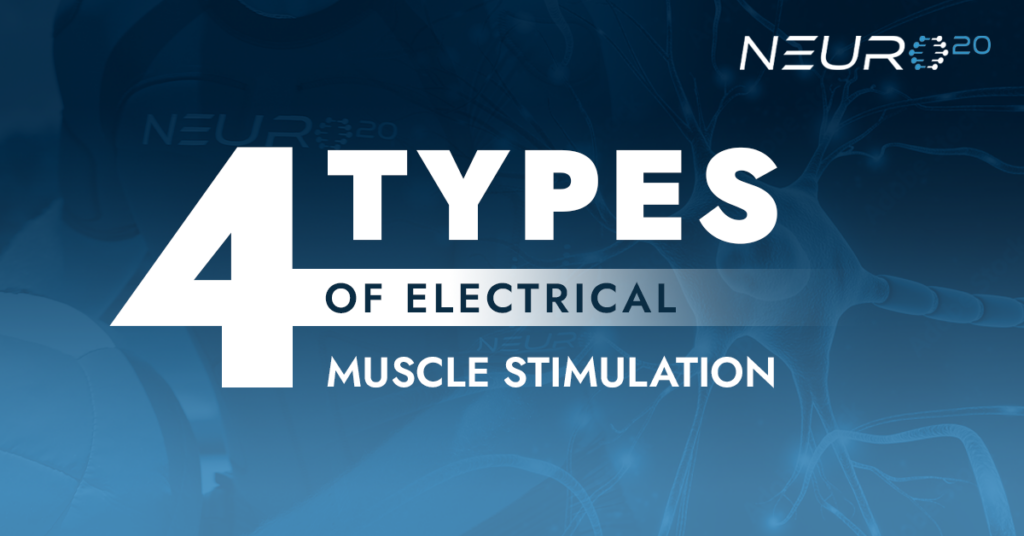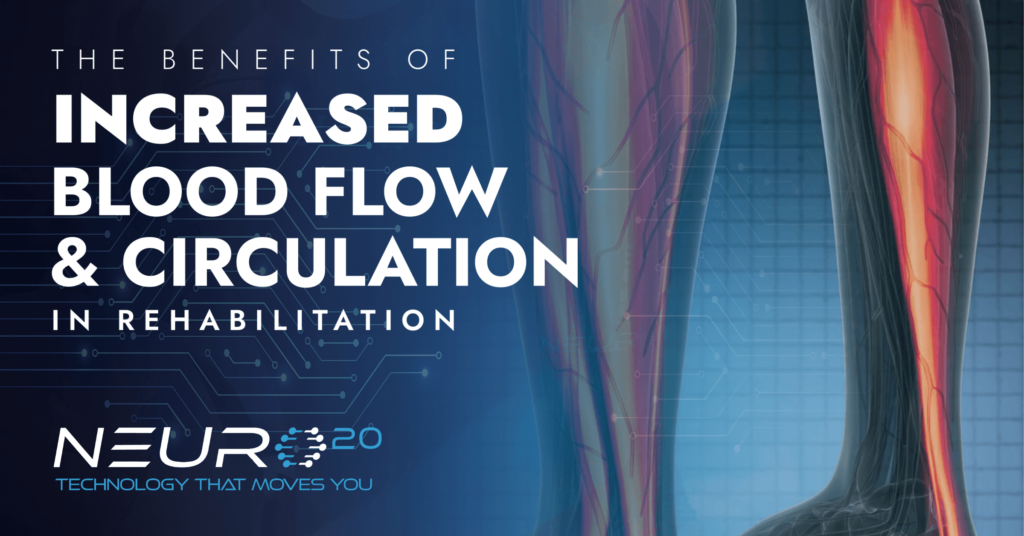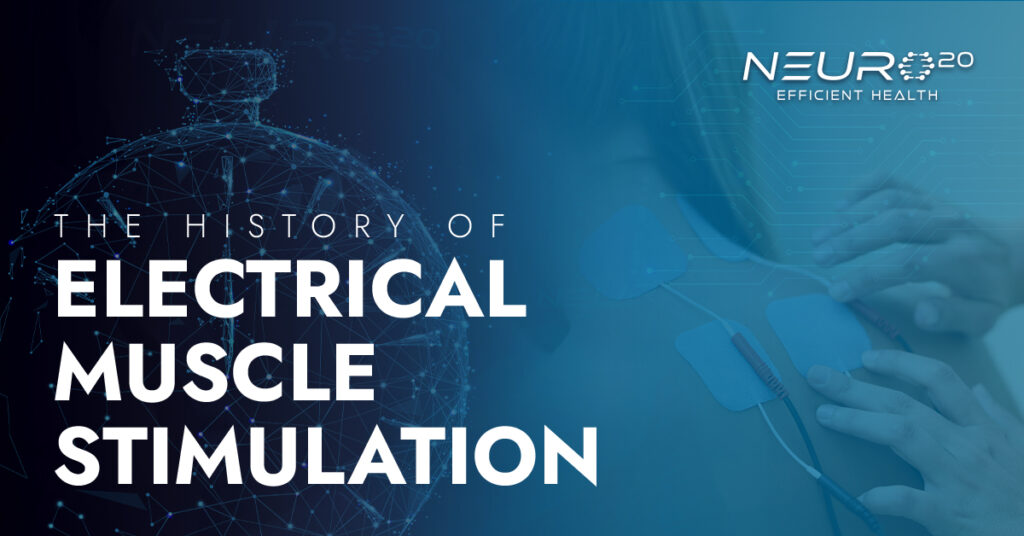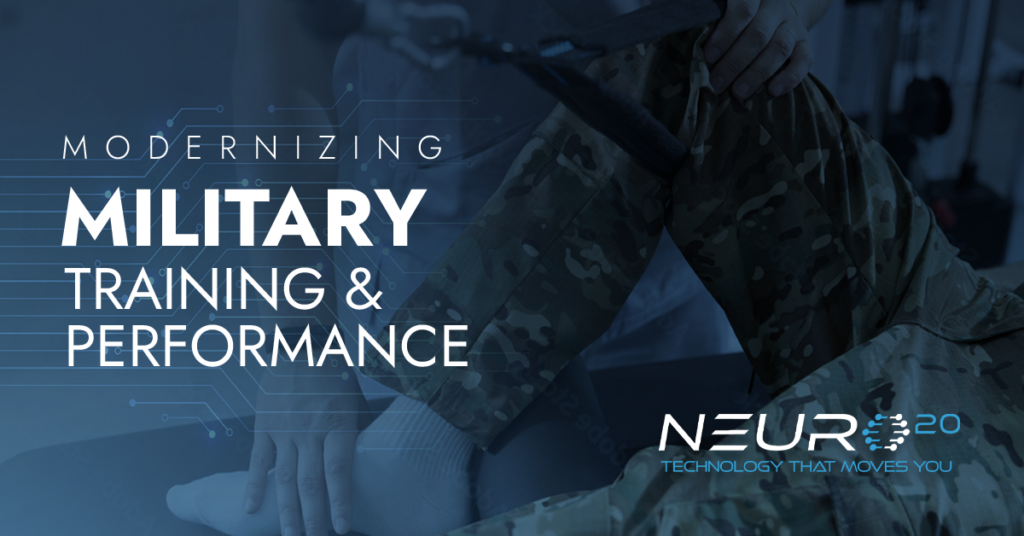Electrical muscle stimulation (EMS) is a type of electrotherapy that stimulates muscle contractions using electrical impulses to strengthen weak muscles, reduce swelling, improve blood flow, and help promote recovery and healing. As the medical and athletic communities increasingly recognize the advantages of integrating EMS into clients’ regimens, its popularity has continued to rise, with licensed professionals using it to augment rehabilitation after an injury or illness or as part of an athletic performance training program.
The first FDA-cleared wearable of its kind, the Neuro20 PRO System is a versatile and innovative device that delivers a rectangular-shaped symmetrical biphasic waveform that can assist with several primary types of electrical muscle stimulation, including Neuromuscular Electrical Stimulation (NMES), Functional Electrical Stimulation (FES), and Patterned Electrical Muscle Stimulation (PEMS).
This article will explore the four most common types of electrical muscle stimulation and how the Neuro20 PRO System can support clinician-provided treatments, ultimately reducing recovery time, promoting healing, supporting rehabilitation, and optimizing human performance.
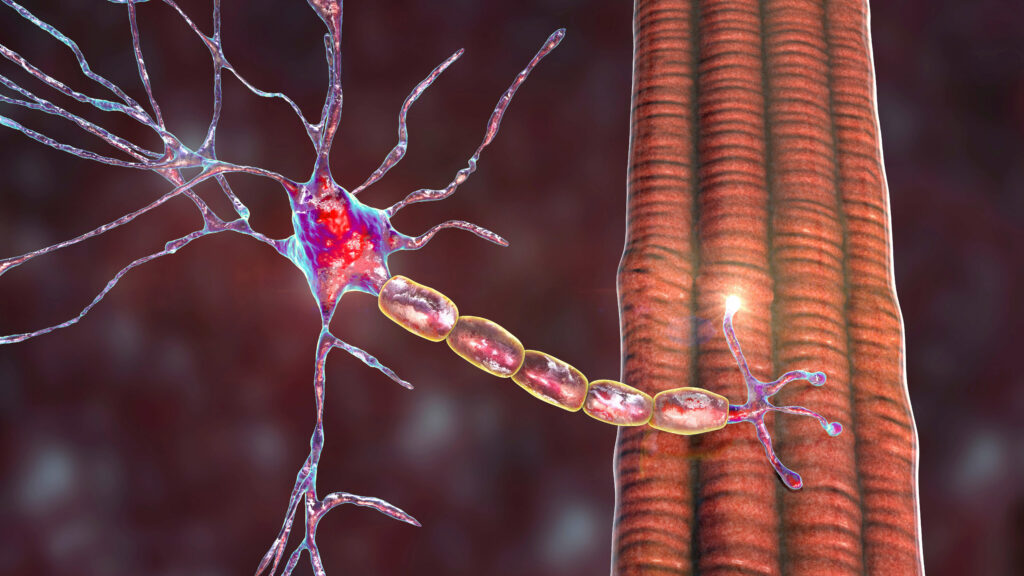
Neuromuscular Electrical Stimulation (NMES)
Neuromuscular Electrical Stimulation (NMES) is a type of electrical stimulation that uses low-frequency electrical currents to stimulate the nerves and muscles. Research has demonstrated that NMES can prevent muscle atrophy and increase muscle strength in patients with conditions such as stroke, spinal cord injury, and multiple sclerosis (1, 2).
The origins of NMES date back to the early 1960s when researchers began exploring the use of electrical stimulation to treat muscle atrophy in astronauts during space missions (3). NMES occurs when current passes through the electrodes into the body and the motor nerves are stimulated, causing a muscle contraction. The intensity and frequency of stimulation can vary based on the level of muscular function and response to treatment. It is often used to improve muscle strength, endurance, and motor control in patients with neuromuscular disorders, such as cerebral palsy, spinal cord injuries, and multiple sclerosis.
The Neuro20 PRO System can provide NMES through its advanced stimulation technology, which can precisely target specific muscle groups and adjust the intensity and frequency of the electrical currents to suit the patient’s needs.
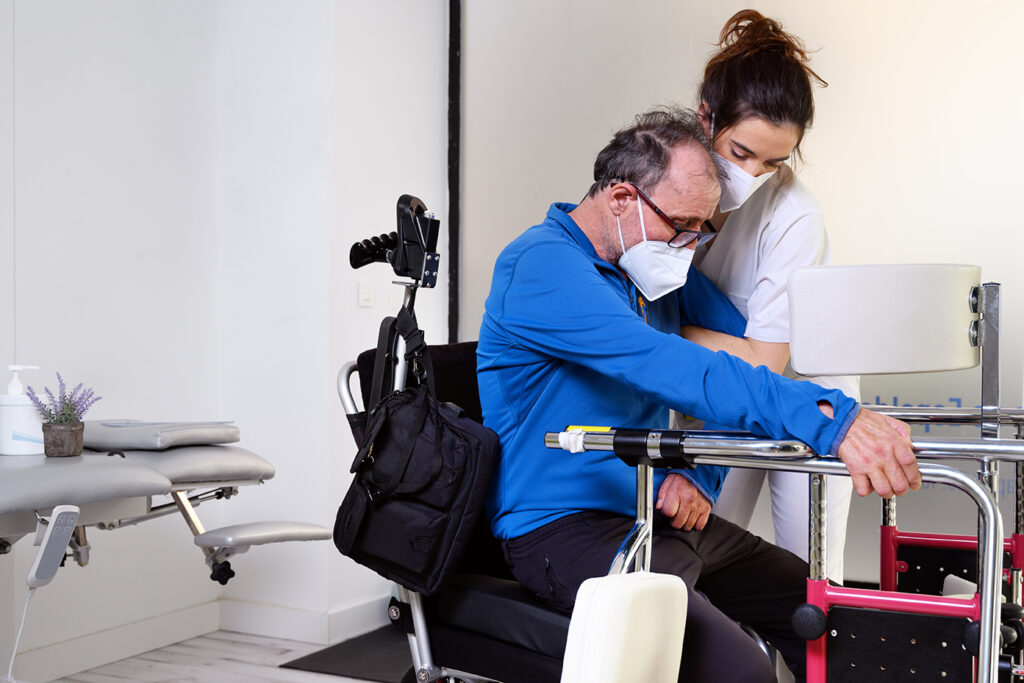
Functional Electrical Stimulation (FES)
Functional Electrical Stimulation (FES) is another type of EMS that is commonly used in physical therapy and rehabilitation settings. FES has been shown to be effective in helping patients with spinal cord injuries regain function and independence (4). It was first used in clinical settings in the 1960s to stimulate paralyzed muscles in patients with spinal cord injuries (5).
FES is often used to assist with functional movements, such as walking, grasping, and reaching, in patients with neurological impairments, such as stroke, traumatic brain injury, and Parkinson’s disease. Clients generally undergo FES training under the guidance of a therapist for rehabilitation; however, FES therapy can also be utilized for mastering a sport-specific athletic movement.
The Neuro20 PRO System can provide FES through its advanced programming and our customized electrodes, which can help patients achieve optimal muscle activation and coordination during functional tasks.
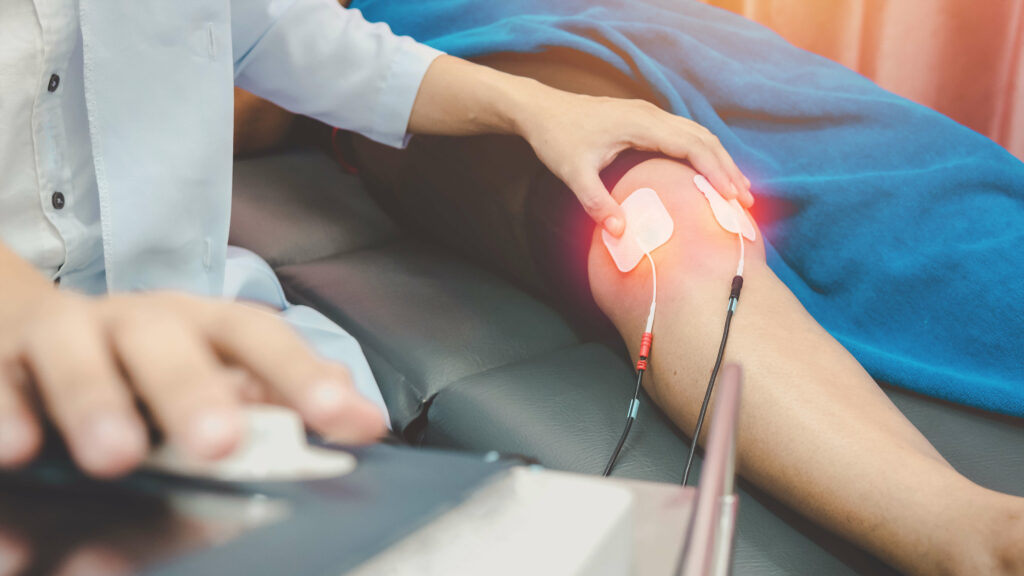
Transcutaneous Electrical Nerve Stimulation (TENS)
Transcutaneous Electrical Nerve Stimulation (TENS) is a type of electrical stimulation that uses low-frequency electrical currents to stimulate the nerves and alleviate pain. TENS was first introduced in the 1970s as a non-invasive, drug-free method of pain relief (6). The first device was developed by C. Norman Shealy, a neurosurgeon, and his colleague John K. Liss, an electrical engineer (7).
TENS stimulates the sensory nerves, suppressing the pain signals sent to the brain to provide relief to the user. Research has demonstrated that TENS can reduce pain and improve physical function in patients with chronic pain conditions (8, 9). It is often used to treat acute and chronic pain conditions, such as back pain, arthritis, and fibromyalgia. The Neuro20 PRO System does not include a TENS mode.
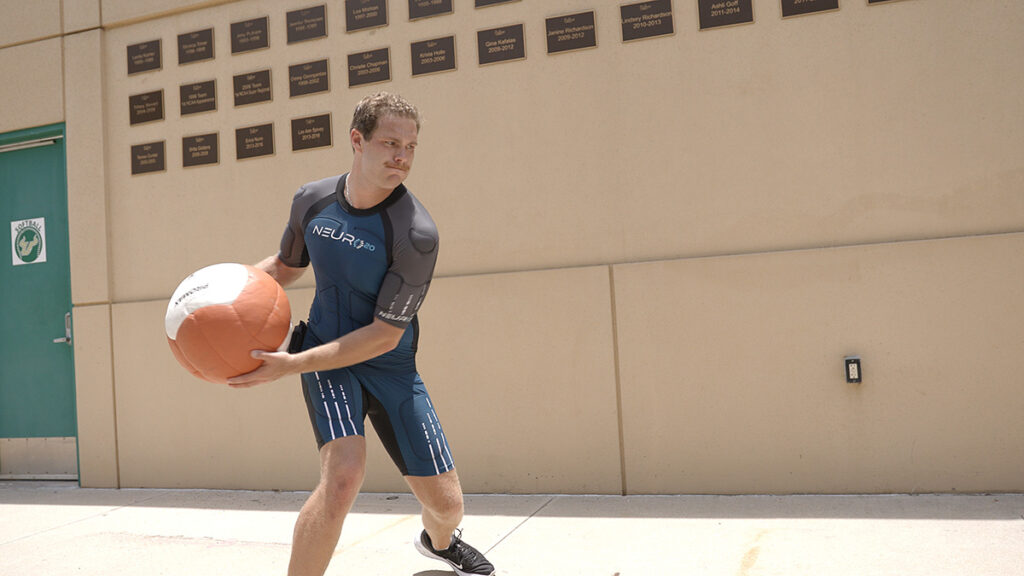
Patterned Electrical Muscle Stimulation (PEMS)
Using precise timing patterns that the nervous system applies to muscles, Patterned Electrical Muscle Stimulation (PEMS) replicates these timing patterns through various programs and training modes. The origins of PEMS can be traced back to the early 1990s when researchers began exploring the use of patterned electrical stimulation for sports performance enhancement (10).
PEMS can be used in combination with other types of electrical stimulation, such as NMES and FES, to enhance the effectiveness of rehabilitation interventions and maximize functional outcomes. Research has shown that PEMS can be effective in increasing muscle strength and endurance in athletes and in patients with muscle weakness due to aging or disease (11, 12).
The Neuro20 PRO System can stimulate up to 42 muscles in a PEMS pattern, artificially creating a motor chain and replicating movement patterns unlike any system before.
Summary
For clients recovering from severe illness or injury or individuals wanting to enhance their athletic performance and overall quality of life, electrical muscle stimulation can be a transformative therapy. Under the guidance of a licensed clinical professional, the Neuro20 PRO System can assist in accomplishing rehabilitation goals with greater efficiency and effectiveness, ultimately enhancing overall health and well-being.
If you are considering adding electrical muscle stimulation to your rehabilitation or training program, ask your healthcare provider about the Neuro20 PRO System and learn how it can help you achieve optimal outcomes.
References
- Lee SY, Im SH, Kim BR, Choi JH, Lee SJ, Han EY. The effects of neuromuscular electrical stimulation on cardiopulmonary function in healthy adults. Ann Rehabil Med. 2012 Dec;36(6):849-56. doi: 10.5535/arm.2012.36.6.849. Epub 2012 Dec 28. PMID: 23342319; PMCID: PMC3546189. https://pubmed.ncbi.nlm.nih.gov/23342319/
- Maffiuletti, N.A., Roig, M., Karatzanos, E. et al. Neuromuscular electrical stimulation for preventing skeletal-muscle weakness and wasting in critically ill patients: a systematic review. BMC Med 11, 137 (2013). https://doi.org/10.1186/1741-7015-11-137
- Sheffler, L. R., & Chae, J. (2007). Neuromuscular electrical stimulation in neurorehabilitation. Muscle & Nerve, 35(5), 562–590. https://doi.org/10.1002/mus.20758
- Popović, Dejan B., Sinkjær, Thomas, and Popović, Mirjana B. ‘Electrical Stimulation as a Means for Achieving Recovery of Function in Stroke Patients’. 1 Jan. 2009 : 45 – 58. https://content.iospress.com/articles/neurorehabilitation/nre00498
- Sluka, K. A., & Walsh, D. (2003). Transcutaneous electrical nerve stimulation: Basic science mechanisms and clinical effectiveness. Journal of Pain, 4(3), 109–121. https://doi.org/10.1054/jpai.2003.434
- Teoli D, An J. Transcutaneous Electrical Nerve Stimulation. 2023 Jan 22. In: StatPearls [Internet]. Treasure Island (FL): StatPearls Publishing; 2023 Jan–. PMID: 30725873. https://pubmed.ncbi.nlm.nih.gov/30725873/
- Teoli D, An J. Transcutaneous Electrical Nerve Stimulation. [Updated 2023 Jan 22]. In: StatPearls [Internet]. Treasure Island (FL): StatPearls Publishing; 2023 Jan-. Available from: https://www.ncbi.nlm.nih.gov/books/NBK537188/
- Nishikawa Y, Takahashi T, Kawade S, Maeda N, Maruyama H, Hyngstrom A. The Effect of Electrical Muscle Stimulation on Muscle Mass and Balance in Older Adults with Dementia. Brain Sci. 2021 Mar 7;11(3):339. doi: 10.3390/brainsci11030339. PMID: 33800054; PMCID: PMC8001595. https://www.ncbi.nlm.nih.gov/pmc/articles/PMC8001595/

